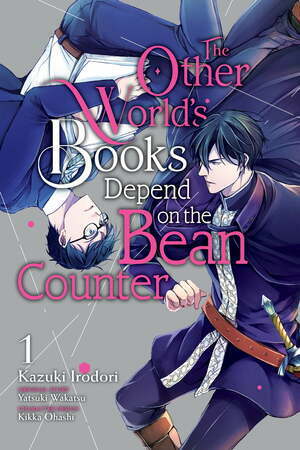
The Other World's Books Depend on the Bean Counter (manga)
by Kazuki Irodori, Yatsuki Wakutsu
Genres: Fantasy, Manga, RomancePages: 180
Series: The Other World's Books Depend on the Bean Counter (manga) #1
Rating:

Synopsis:Once upon a time, in the not too distant past, a holy maiden was summoned. Not just any holy maiden-one hailing from modern Japan. But this story is not her story. This is the tale of the humble accountant, Kondou, who accompanied her and his trials and woes as he accounts in a new world... But no tale is complete without a love interest. And who better to play that role than the handsome knight captain Aresh? Will he begin a personal quest to save said bean counter-who toils around the clock-or is Kondou doomed to be married to his work evermore...?!
The first volume of Kazuki Irodori’s manga adaptation of Yatsuki Wakatsu’s light novel The Other World’s Books Depend on the Bean Counter is pretty fun. I like the character designs, I find it interesting that I trust almost no one other than Seiichirou and Aresh, and I’m curious where both the relationship and the story of the Holy Maiden are going.
I will say that there’s basically dubious consent sex to save someone’s life here, which is worth knowing about: Aresh cures Seiichirou from an accidental overdose using magic, which he can’t tolerate either, and then has to “familiarise Seiichirou with his magic” (with close contact) in order to save his life from that. He does try to obtain consent, but it’s not clear that Seiichirou understands. I wonder how this bit comes across in the light novel; it’s fairly skated over in the manga, beyond a few scenes. It doesn’t seem like Seiichirou hates it or anything, and he still has some room to protest, but still, if you don’t like that kind of scenario or find it triggering, it’s useful to know.
It’s hard to evaluate exactly what I think of this series yet, but I’m looking forward to reading more and wondering about the light novel (which may contain some more detail and context), so it’s a good start for me!
Rating: 3/5












